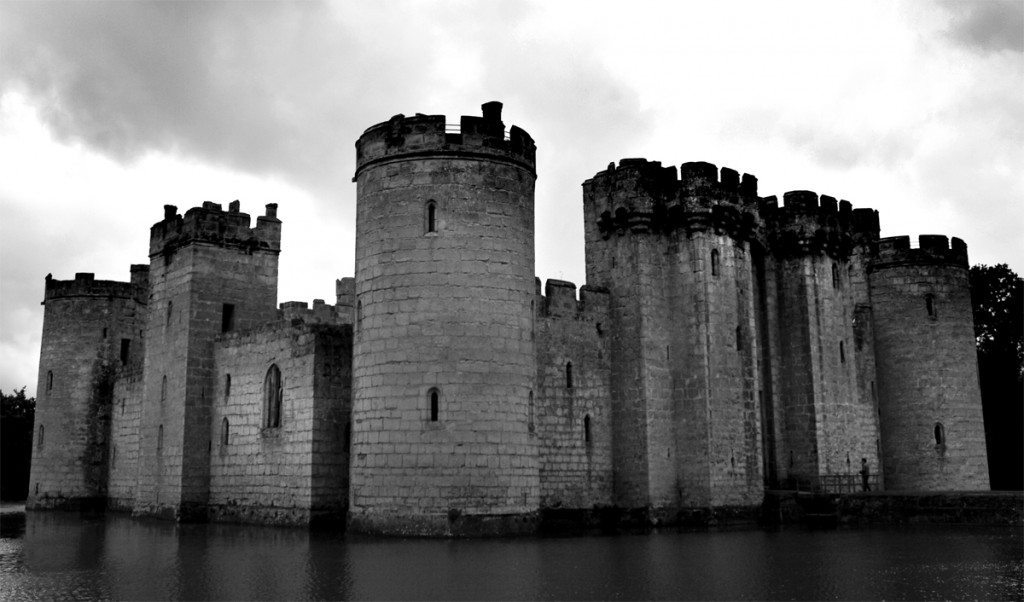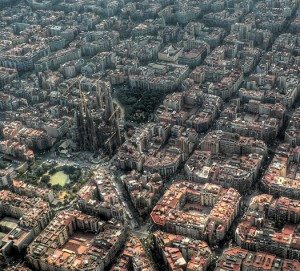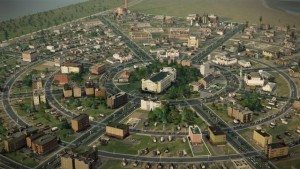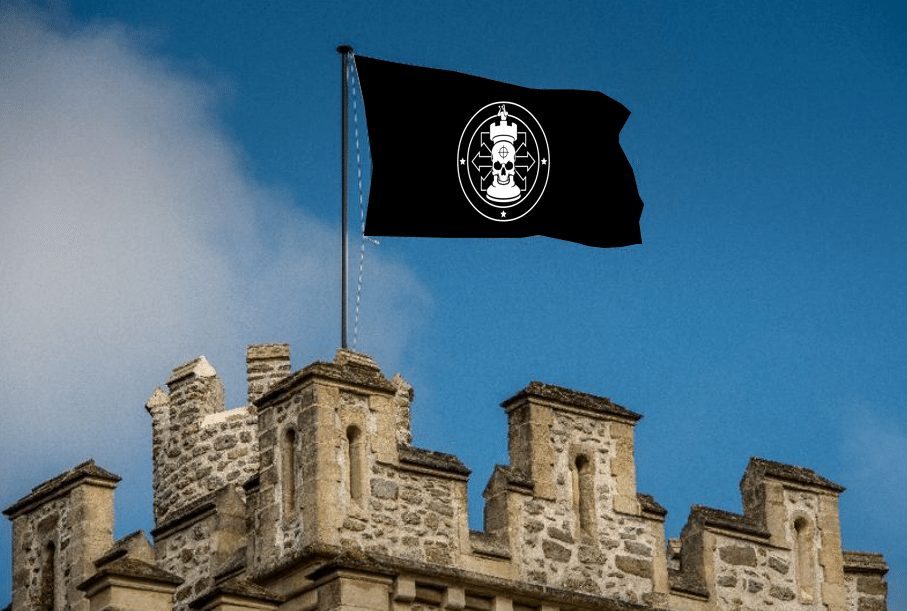My thoughts
After the November, 2015 attacks in Paris, France and the Bamako hotel attack in Mali, I’ve had a little bit of time to think about those horrible events. Gunfire, explosions and death all have a way of waking up those who are asleep. The famed writer C.S. Lewis wrote that “pain is God’s megaphone to a deaf world.” After these somber events, perhaps more people have actually woken to the fact that no amount of brick and mortar can defend them against terrorists intent on killing everyone, and in order to have a chance at survival the average citizen must stop living with his or her illusions and instead choose to wake up to the realization our world is just plum full of crazy people.
Walls and doors can shield us from most criminals who want to get in but there are limitations to what barriers can do. Every nation has a public and private industry built around convincing people that they will be more protected by having the latest and greatest tools. Every society has a crime control program that is supposed to prevent “the lunatics from taking over the asylum”. Every culture has a process-driven approach in designing its cities. What good are tools if you don’t know how to use them, or cities if your reliance is solely on it to protect you from harm?
Paris, the art house of the world known for its elegant and stylishly, fashionable pyramid-entrance outside the Louvre museum beckons tourists to enter. Liberte fraternite egalite! All that is chic in the free world will end if the mentality of the average French citizen who lives day to day existentially doesn’t soon catch up with radical Islamic killers that have a purpose and a plan. The idea of survival should be equally important to the epicurean and the ascetic.
Every village, town and city from here to Timbuktu holds a complex eco-system of independent people, community and businesses, each pursuing their own goals and frankly many of them don’t give a damn about you. If you want to live, then you have to start taking control over your own life. It isn’t the fortification of bollards, fences, stadium security and security cameras that are going to stop the criminals from getting a crack at you, it is your purview on survival-related matters that must be built up. Certainly those items fulfill a role, but we rely too much on cities to protect us from harm. Stop-lights, police departments, cameras, and a plethora of things of things we use to shield us from harm have absorption points; these things can fail. Choosing to live purposively regarding security and safety, with a mentality towards survival, must work in unison with human constructs if you want a better chance at living. Do not solely rely on a city to protect you from harm. Whether it is a bamboo wall or a Star Wars blast shield makes no difference. In the physical world the lion never loses to the lamb.
The beginning of constructs
The designing of fortifications for safety and security has been around for as long as man needed protection from another man and was able to use his ingenuity to shape his resources expressly to shield him from harm. The use of fortifications in history, whether as caves or castles, have their roots in warfare and defense. Defenders used them as shielding from foreign invaders intent on removing the incoming civilization that was expanding its’ own culture. Cities likely evolved from these primitive constructs.
Cities have come into existence for many reasons and there is much speculation as to the various causes for its development. For example, many started out as centers for trade, for housing a growing population, for organizing and maintaining farming land and the most likely was for defense. The Romans created fortifications along the areas they controlled thereby allowing them to dominion over each fortress and the areas beyond. They essentially ‘island hopped’ from one fort to another and shipped equipment and supplies. Police departments are able to do the same with precincts and stations in the modern area. Planning where to locate buildings for the purpose of providing security for the governing culture and its’ citizens is just one part that goes into preventing crime in environmental design.
The epicenter of most cities probably started at the intersection of a trade route or sea port, where a need for commerce allowed it to sprout. Cities all over the world probably grew organically by incremental additions, from the existing housing of the population that already lived at an epicenter, but was also some forethought involved. The builders create a functioning layout that attempted to meet the needs of the denizens. Today, city planners make efforts to maintain order in environments as cultures, economies and resources are constantly changing and need to be balanced in order to reduce crime.
Human beings have used their ingenuity for thousands of years to construct defensive works. As various populations grew, and armies amassed to war with each other, population centers found it necessary to create boundaries. These boundaries, in the form of walls, not only protected the troops quartered inside the fortifications but it might house their families as well. The center of the fortification likely was in the form of a citadel. What started out as a command building for the tribe or army evolved into a city where the citadel was the center of its government. Walls were the logical necessity for keeping in the defenders and keeping out the attackers. As technology evolved, berms, moats, parapets, and the like were eventually added. Defenders may have used multiple, portcullis gates to funnel and trap invaders into stone areas where murder holes and hot oil could kill them. Peacocks sounded alarms in many ancient Indian gardens.
The same technology that controlled or dissuaded invaders could also do the same for the citizens living within; security planning deterred citizens from insurrections, mutinies and running amok. The three basic measures of physical defense are still applied today; the perimeter of a facility, the building exterior and the interior. These may not have squeaky floors, bells on strings draped across pathways, or booby traps and drawbridges to alert those who desire protection but the end goals are the same. The primitive and the modern man have always needed protection from one another; in our modern world it is the terrorist that penetrates our well-thought out defenses. Whether it’s used in Ferguson, Missouri or Disneyland, California doesn’t mean a thing. You can change the location but don’t change your mindset when it comes to being situational aware.
Modern times
Today, planners replaced murder holes and moats with less offensive measures yet the purpose is the same. Motion detection lighting, fence-lines, locks, alarm systems and even artwork and gardens work to serve public and private security. The more security is enhanced, the more the risk to citizens is reduced. Crime and preventing crime is also more easily understood. The police and organizations involved in reducing crime are more capable of compiling statistics, targeting where it may happen next, and identifying the need for increasing public awareness to combat crime. Meanwhile, city planners such as architects, government offices, and consultants work to find ways to improve the city’s physical features, activities and personnel in such a way that fosters positive outcomes for all, while deterring criminals from acting out a crime.
The construction of defenses and the way they were constructed had as much to do with the type of elements native to that region, the kind of material resources at hand, the manpower that could be gathered and utilized and the type of land. Flat and sloping land is best to build on but hilly land can provide people the best defenses. Historians have found many cities hidden inside of mountain sides, such as Kailash-Zang in Western Tibet or the fortress pueblos of the American Indians. Many cities developed from the idea the epicenter of any construct held the center of power; the center of power was either religious-military or governmental, and from this concept came grid and circular patterns of construction. Buildings and people who held lesser degrees of importance stayed at the fringes of the construct.
Cities were built on the concept of pure geometry until the changes in technology during war reduced the segregation that developed repetitive patterns in building fortifications, such as walls, a certain way. Europeans cities are a testament to this type of thinking; Paris’ Notre Dame is encircled with 20 districts with supporting buildings spiraling outward from its’ heart. Baghdad also has various rings of importance; ghettos tend to be on the outer edges of many circular cities. Salt Lake City, Utah is laid on a grid pattern and the center is their Temple Square. Builders used geometric patterns in designing cities and fortifications for many reasons; Masons injected sacred geometry into city proportions, it provided excellent fields of fire and defenses such as the star patterned fortresses, it controlled traffic flow and allowed direct pathways such as in grid patterns, and it fulfilled the creator’s ideas of keeping order.
As fortifications changed into industrial cities and technology changed where a building could be located the increasing population had to be controlled. Factories could be housed inside cities rather than along rivers where power plants energized them, the working class could work further from their place of employment as transportation became more efficient. Bands of mix-use buildings like skyscrapers and residential housing were the new change in planning and it largely changed the landscape of villages, towns and cities all over the world. City planning is not a new concept; it has existed for thousands of years to help repel invaders.
Today it exists in order to find the best solution for a city’s expanding or declining population and multi-center urban areas; every change in an economy brings with it the need for greater city safety and security. The citizens, government agencies and local associations must best decide what environmental programs or strategies will prevent crime. Torch lights and armed warriors have evolved into street lamps and police officers, but the purpose is the same, to prevent crime by determining the best location for their placement; in this manner friends can be identified and foes might be deterred from engaging in crime.
Conflicting Philosophies
I’ve discussed the construction of fortifications in history and building philosophy but now I’m positing something different. I want you to consider how it is in the modern world, with every matter I’ve brought up so far, that we still have communities within our communities that work to destabilize the efforts of those who want to construct. Essentially our mechanical constructions are impacted by those who choose to defy normal human conditions.
The criminologist, C. Ray Jefferey wrote about defensible space and crime prevention in his book, Crime Prevention through Environmental Design (CPTED). He wrote,
“Criminal behavior can be controlled primarily through the direct alteration of the environment of potential victims….Crime control programs must focus on crime before it occurs, rather than afterward. As criminal opportunity is reduced, so will be the number of criminals.”
The basic premise of CPTED as stated, by the CPTED Association is to create a design that can most effectively make use of the physical environment and in doing so reduces the incidents of crime. Environmental planners might believe that a quality of life will improve because their blueprints become reality. Jefferey is correct in his belief that altering the environment reduces the incidents of crime. This is simply because the opportunity to do so is removed, but an environment will never completely stop criminal behavior. It may stop most criminals but for those who aren’t respecters of boundaries will find a way around it. Why don’t you ask Reg Monroe, the ambitious yet totally naive architect who built walls around the Alexandria-Free Zone, in the television series The Walking Dead. He was killed by the human Doc Anderson instead of a zombie no less. So much for living in a bubble. Rick’s arrival to the community let’s everyone know there’s going to be hell to pay; you are the sheep or the wolf.
“The cavemen, they were all nomads and they all died when we evolved into this, and we lived. Civilization starts when we stop running, when we live together and we stop sending people away, from the world and from each other. That’s what I’m going to tell her. That’s what I’m going to tell everyone.”—Reg to Maggie Greene
In the most basic sense placing criminals into an environment such as a prison will reduce the incidents of crime because the opportunity to commit a crime is obviously removed. It is naïve to think that an environment is the key to stopping criminal behavior; so many more factors must be involved to do this and even then no exact science exists to curb immoral behavior. Prison is a crime dampener solely because it removes or retards any physical opportunity for inmates to conduct crime, but in the confines of their cell room, potential crimes can still be plotted by those who don’t want to stop. The irony is not lost on two inmates sharing the same cell; one is passive and weak and the other is an exploiter of men. Criminals will continue where they left off when opportunity once again presents itself. Some involved in social justice communities actually believe that environments, and for that matter, austere environments create criminals.
The U.S. Department of Justice, Office of Community Oriented Policing Services, issues CPTED Guides for police departments to utilize in their respective jurisdictions. The U.S. DOJ CPTED guidebook notes that crime can be reduced by, “controlling access, providing opportunities to see and be seen, and defining ownership and encouraging maintenance of territory.” CPTED focuses on aspects of design, makes a systematic analysis of crime events, looks for programs and strategies that are custom tailored to the location and problem at hand. Lastly, citizens are encouraged to play a role by defining the problem and being accountable for long-term improvements.
These are all measures to build CPTED programs in cities. I don’t disagree with the DOJ and CPTED but it is completely naïve for anyone to think that criminal behavior can be stopped by changing the environment. Idealists like H.G. Wells, author of Things to Come and social engineering proponent, found out that his humanistic leanings bit him in the rear. Some human beings who defy laws are emboldened to do so by a culture that portrays criminals as victims in need of a sympathetic ear; if only the environment were more suitable for growing up. I don’t deny that environments are breeding grounds for gangs and that heartache happens but people have to choose how to live regardless of the perilous circumstances.
Baltimore, Maryland
During the Freddie Gray protests, where residents of Baltimore protested in front of the Western district police, it seemed that Mayor Stephanie Rawlings-Blake gave her permission for the protestors to engage in criminal behavior. Here is her statement:
I’ve made it very clear that I work with the police and instructed them to do everything that they could to make sure that the protesters were able to exercise their right to free speech. It’s a very delicate balancing act, because, while we tried to make sure that they were protected from the cars and the other things that were going on, we also gave those who wished to destroy space to do that as well. And we worked very hard to keep that balance and to put ourselves in the best position to deescalate, and that’s what you saw.
And destroy they did. Whether agitators were bused into this environment or not doesn’t matter. Those with a survivor mentality know what to do during events like this. After the damage was done the Mayor stated she meant something different. Whether she was well-intentioned to allow protestors to protest peacefully or not is up for debate. Howard Libit, Baltimore’s Director of Strategic Planning and Policy, asserted, “there was an effort to give the peaceful demonstrators room to conduct their peaceful protests on Saturday. Unfortunately, as a result of providing the peaceful demonstrators with the space to share their message, that also meant that those seeking to incite violence also had the space to operate.” The Mayor never apologized for her poor word choices. This protest was well covered in many Breitbart articles.
Paris, France
The 13 November 2015 Paris attacks disrupted the capital of France, its northern suburb, Saint-Denis and the rest of the world. The attackers killed 130 people and 368 people were injured.
Two different events. Two different cultures. There is a string to connect them both.. I am not equating the Baltimore protestors to radical Muslims who killed innocent people. The string connecting both groups, whether violent protesters or Muslim terrorists, is that each decided to bypass every human construct they could in order to disrupt communities.
Now what
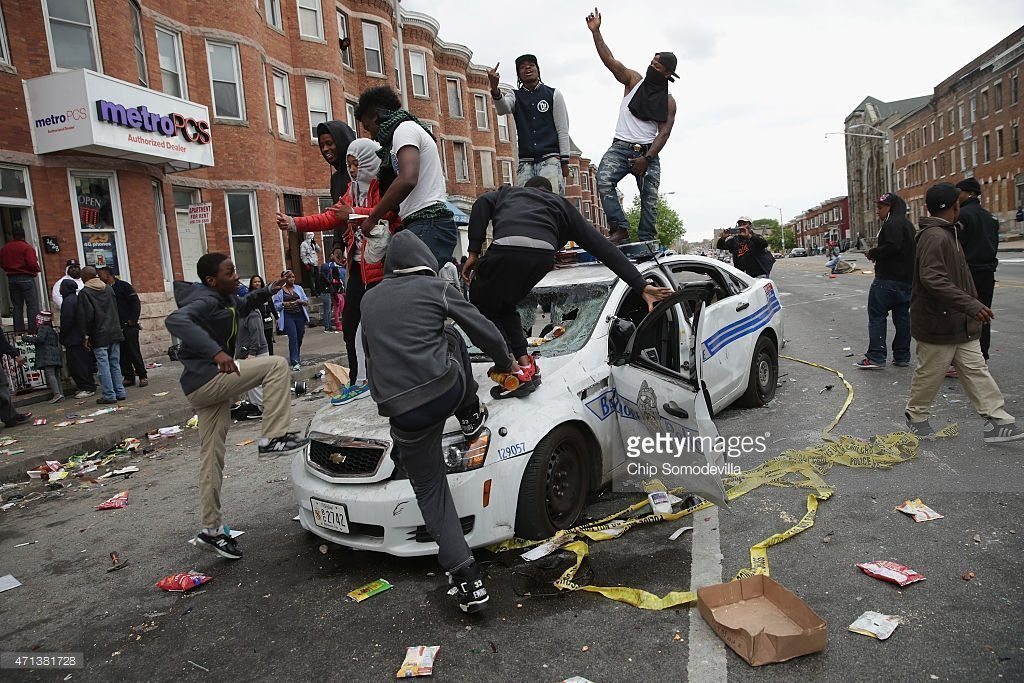
Ancient builders knew well enough to design their fortifications with the resources at hand in a manner that provided the best control of the populace, invaders and inner-dwellers. CPTED is built on the ancient baseline of having a strong building and good road structure by adding more detailed controls to deter criminal activity. Certainly, CPTED is more of an exact science of deterring criminal behavior than centuries ago but it cannot be the ‘be all, end all’ for guaranteeing security. Whether it is Johannesburg, South-Africa or Bogotá, Columbia or Mainstream, America only so much change in an environment will deter criminals. How far should free speech go when it disrupts the rest of the world? The Occupy movement, the Ferguson protests and the Paris terrorist agenda all exist and we cannot wish these people away. I support free speech and protest but not the way these were handled. Good citizens and police were injured and many died during the Paris events.
You can agree with me or not; my effort here is to highlight the need for every man and woman to do a paradigm shift in their thinking. Stone castles or glass houses can only provide so much protection. Relying on the environment, gated communities, stadium security and the hope that others think like you is a poor strategy for self-defense. This is not about being fearful rather it is about being prudent.
There is a false idea and foolish belief among some environmental designers with regards to the concept of territoriality. They believe that if people respect their own property then they will respect the property of others. This is hopeful thinking. Criminals may ruin their own neighborhoods and even the neighborhoods of others. Criminals look for opportunity and it is not defined by borders, whether it be resident protesters destroying their own communities such as they did after the Rodney King outcome, or radical Muslims coming into the peaceful eco-system from outside. Criminals are not respecters of borders.
Barriers are only temporary measures to delay criminals. Those with a serious agenda will penetrate any obstacle. Perceptual and real barriers put boundaries in front of criminals. Limited points of entry ensure to some degree that criminals will be more reluctant to commit a crime but this is not true for all. There are no perfect security systems or programs.
Criminals may not always have a direct path to a bank, or entrance to a freeway when they think about planning a crime; this kind of planning on the part of the builder may deter some. Escape routes should be difficult to perform. Locations of exits and entrances, street patrols and other security measures, aggressive neighborhood watch programs, and rewards programs are some of the ways CPTED effects environments and assists security personnel. But those intent on pushing their own beliefs onto the rest of the world are not going to be deterred by our man-made constructs for very long.
Criminals are not going to be discouraged because and environment such as a well-lit basket-ball court or open field in a park makes them ‘stand-out’ in the crowd. Those wanting to commit mayhem will do so at your peril. I am not knocking CPTED. I am not knocking well-intentioned builders, dreamers and their creative ilk that make castles out of mudheaps. We need more people who willfully change the world for the better. CPTED is a program that effectively reduced crime for nearly 40 years. Evaluators ask why a location provides a specific criminal risk to people and what kind of criminal opportunity can come out of it.
Planners then work to reduce the poblem by re-designing the environment. The more complex the problem is, the more time is needed to analyze and solve the problem. In the end, for CPTED to be most effective is to involve stake-holders of that community. The police, private security, business owners and residents of the geographic area alongside government employees must problem-solve to address holes in the locations to impact everyone positively. Environmental designers, community members and land managers must become educated about CPTED to fully utilize it. Resistance to change can inhibit successful cooperation and planning. CPTED is not a fix all program. It is only one tool that groups can use to assist the public and private security in reducing crime. Good change requires good planning, CPTED seems to offer a significant process for modifying poorly built environments into better functioning mechanisms for the benefit of communities.
Final Thoughts
Crime knows no social, ethnic, economic, or racial boundaries. Criminals come from all segments of society. Criminals come from all walks of life.
Tinker, tailor, soldier, sailor, rich man, poor man, beggar man, thief,
Or what about a cowboy, policeman, jailer, engine driver, or a pirate chief?
Or what about a ploughman or a keeper at the zoo,
Or what about a circus man who lets the people through?
Or the man who takes the pennies on the roundabouts and swings,
Or the man who plays the organ or the other man who sings?
Or what about the rabbit man with rabbits in his pockets
And what about a rocket man who’s always making rockets?
Oh it’s such a lot of things there are and such a lot to be
That there’s always lots of cherries on my little cherry tree
Let’s be real. Physical changes to the environment can only be changed so much to suit people. Rules, laws and policies can only be changed so much to protect the average citizen. Crime prevention and education programs can only be changed so much. There are children who grew up in austere environments and became productive citizens. There are children who grew up in wealth and became criminals. Children who grew up in the same home endured the same issues as their siblings who chose to have a criminal problem. Choosing to be a productive citizen is a matter of coping differently to the same circumstances.
In the end, being watchful and prompt to meet danger or an emergency is your choice. Run the other way if you need to and find a good barrier to protect you. But those who inevitably survive in any environment adapt to the prevailing situation. They become able to see things clearly when the walls come tumbling down.
*The views and opinions expressed on this website are solely those of the original authors and contributors. These views and opinions do not necessarily represent those of Spotter Up Magazine, the administrative staff, and/or any/all contributors to this site.

